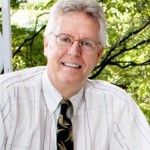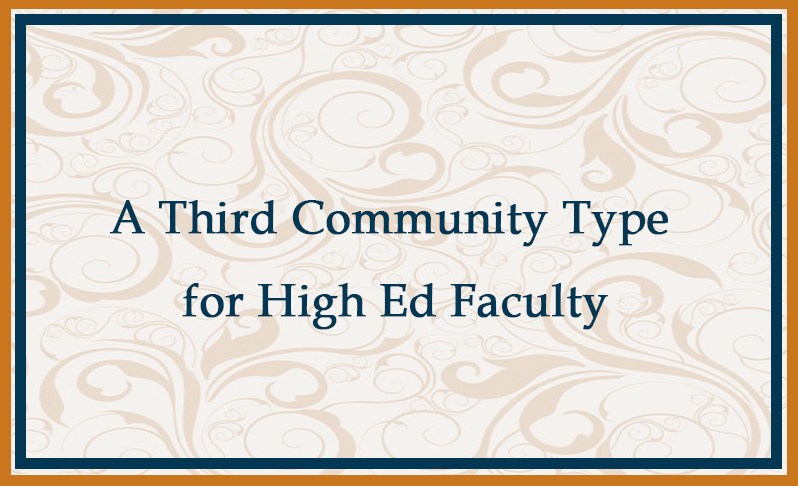A few years ago a group of faculty came to us, and because we had taught creative writing for years, they asked us to facilitate a fiction-writing group. No, fiction wasn’t something they could claim on their promotion and tenure documents, but it was something they had always wanted to try (why didn’t they try enrolling in our novel-writing class, we wondered). We had never done such a community, but since it sounded creative, we agreed.
Just this week that group published its third collabo-written novel.
Defining The Three Types of Faculty Development Communities
Recently, we have been examining the two major types of faculty groups sponsored by Centers of Teaching and Learning (CTLs), the Breakfast and a Book (B&B) and the Professional Learning Community (PLC).
Our novel-writing group represents a third type we simply call the Creative Community. The Creative Community (CC) is called into being usually by a narrow, single task rather than a desire to study a subject broadly. Unlike the B&B, it focuses on a product, not discussion. And while a PLC studies the background research both on the topic and areas surrounding it (e.g., metacognition), the Creative Community has little concern with the “big picture.” Actually, a Creative Community seems more like an academic workgroup, an ad hoc unit designed for a specific project. Workgroups, however, are usually constituted to solve an institutional problem that cuts across the disciplines (e.g., a strategic plan, a diversity initiative). The Creative Community is essentially a writing group producing a specific document (e.g., an academic article or a piece of fiction).
Related Reading: Introduction to Applied Creative Thinking
Years ago, for instance, we ran a PLC designed to introduce assessment to the University. Along the way, we invited Peggy Maki, an assessment expert to campus, Peggy Maki, to facilitate a week of workshops. In one of her sessions, she happened to mention she was editing a collection of essays on how universities were responding to the call for assessment. A subgroup of six of us in the assessment PLC started talking with her, wondering if she would like an article about this university’s attempts to develop and assessment strategy. When she invited us to participate, we decided we had to meet more frequently than our PLC had been. We divided up the writing into various sections, came together weekly (the assessment PLC met bi-weekly), and produced a chapter for Maki’s Coming to Terms with Student Outcomes Assessment (2010), “From Bereavement to Assessment: The Transformation of a Regional Comprehensive University.”
How to Develop A Creative Community
The Creative Community can be formed by any department, but because it often necessitates skills from differing disciplines, its organization is often best facilitated by a CTL. When we wrote on assessment, we asked two faculty members who weren’t in our original PLC to join us because we needed their specialties. One member, for instance, was the head of Institutional Effectiveness at the University, while another had just done an assessment study for the College of Education.
In another instance, the dean of the College of Education came to us because his unit had been given a state grant to facilitate a newly-passed state law, Senate Bill 1, that mandated a seamless transition of Common Core between K-12 and postsecondary institutions. The dean asked how we would organize such a cross-campus effort. We picked two faculty members with whom we had worked in the past, and after several meetings we came up with a working document and methodology that, interestingly, involved our creating a series of interlocking PLCs.
Related Reading: Teaching Applied Creative Thinking
Problems A Creative Community Solves
Creative Communities, then, can be employed to solve immediate problems. Our Common Core CC led to the formation of another group, our assessment CC basically executed a one-shot article, while our creative writing CC has been on-going for the past four years. That community began as a way of evaluating each other’s fiction (e.g., a mystery short story that someone wanted to submit to Ellery Queen’s Mystery Magazine) and transformed itself into the whole group working on a single project.
Basically, the success of the CC has encouraged us to beget several more. We encouraged a member of the College of Justice and Safety to work with a faculty member from psychology—yes, we would consider a two-person team a CC. For New Forums, we started a three-person team to write the Introduction to Applied Creative Thinking (2012) and a four-person team to write both Teaching Applied Creative Thinking (2013) and Achieving Excellence in Teaching (2014).
Three types of communities exist out there—try them.
Author
 Ph.D Hal Blythe writes literary criticism to mystery stories. In addition to the eleven books he’s published with New Forums, Hal has collaborated on four books on a variety of subjects, over 1000 pieces of fiction/nonfiction, and a host of television scripts and interactive mysteries performed by their repertory company. He is currently co-director of the Teaching and Learning Center for Eastern Kentucky University. Meet Hal Blythe.
Ph.D Hal Blythe writes literary criticism to mystery stories. In addition to the eleven books he’s published with New Forums, Hal has collaborated on four books on a variety of subjects, over 1000 pieces of fiction/nonfiction, and a host of television scripts and interactive mysteries performed by their repertory company. He is currently co-director of the Teaching and Learning Center for Eastern Kentucky University. Meet Hal Blythe.



